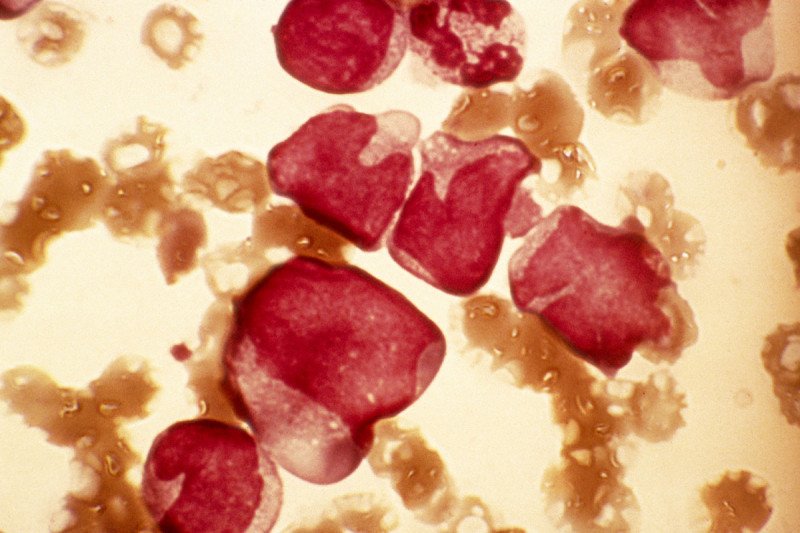
Acute myeloid leukemia (AML) is one of the most common blood cancers in adults. The disease is difficult to treat with chemotherapy and is usually fatal. However, researchers have identified a potential weakness: AML cells are less able to export iron compared with normal blood cells, leaving them at risk for iron-induced death.
Now researchers in the Sloan Kettering Institute laboratory of Jan Grimm have found a way to exploit this vulnerability. Working with the laboratory of Monica Guzman at Weill Cornell Medicine, they have shown that a drug the US Food and Drug Administration has approved for anemia can boost iron in AML cells to a toxic level. Since AML cells can’t clear the excess iron, the cancer cells die while the normal cells are unharmed.
The results are published in Nature Nanotechnology.
“It’s very exciting that we have a drug that appears to be effective against a disease that has been hard to treat,” says Dr. Grimm, a molecular imaging specialist, expert in nanoparticle technology, and co-senior author of the study “We think this approach can benefit people with AML and possibly those with other leukemias and tumors as well.”
“Understanding the vulnerabilities of cancer cells, in this case their inability to export iron, results in an Achilles’ heel that can be targeted by delivering excess loads of iron,” says co-senior author Dr. Guzman, an associate professor of pharmacology in medicine and a member of the Sandra and Edward Meyer Cancer Center at Weill Cornell Medicine.
Microdelivery
The drug, called ferumoxytol (Feraheme®), consists of iron nanoparticles. These microscopic particles are less than one-thousandth the diameter of a human hair. Ferumoxytol was approved by the FDA in 2009 to treat people with anemia, whose iron levels are too low because of chronic kidney disease. In 2018, the application was broadened to include adult iron-deficiency anemia.
Normal cells can export excess iron using a protein called ferroportin. In contrast, AML cells that have low ferroportin levels are unable to get rid of an iron surplus. Delivering additional iron through the particles tips the balance, causing the cancer cells to die.
The study found that treatment with ferumoxytol proved effective in mice. The drug reduced the number of AML cells, and the animals lived nearly 75% longer. This suggests that ferumoxytol could be effective across a range of leukemias, the investigators say.
A Surprising Effect
The strong antileukemia effects of ferumoxytol came as a bit of a surprise. In 2014, Dr. Grimm’s lab published research showing that ferumoxytol can deliver drugs or imaging materials to tumor cells. Researchers regarded the nanoparticles mainly as vessels to carry agents — without any significant additional biological effects. They did not suspect that the nanoparticles alone could kill cancer cells.
“We are exploring ways to make them work even better,” Dr. Grimm says. “We have just scratched the surface of their potential.”
Edwin Pratt, a member of the Grimm lab and the study’s co-first author along with Vicenta Trujillo Alonso, a postdoctoral associate in medicine at Weill Cornell Medicine, says ferumoxytol circumvents the leukemia cells’ normal control system to cause the iron excess. “What’s impressive is that it destroys not just the leukemia cells but also the leukemia stem cells that give rise to them,” he says. “A lot of other cancer drugs have trouble getting to the stem cells, so the cancer is not fully eliminated.”
The researchers say their next step is to demonstrate the effectiveness of ferumoxytol in combination with existing frontline therapies for AML and other leukemias. Since ferumoxytol has been used in people with anemia for a decade, there may be much less need for safety testing.


